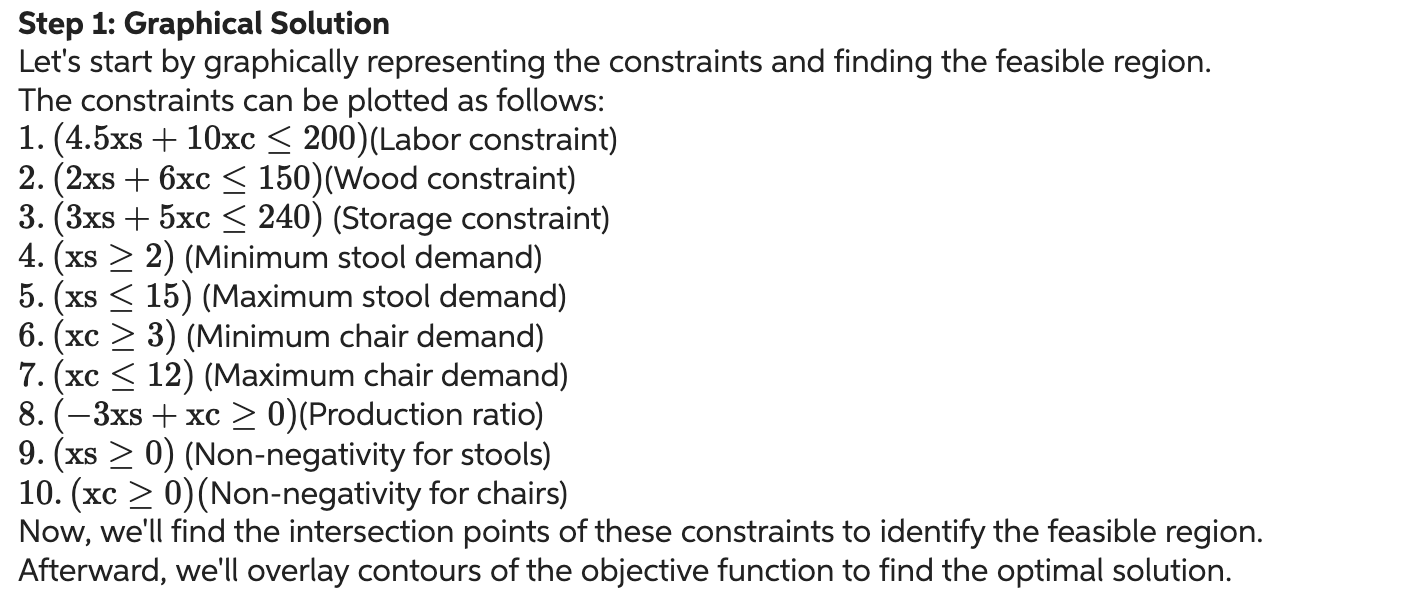Answered step by step
Verified Expert Solution
Question
1 Approved Answer
Step 1: Graphical Solution Let's start by graphically representing the constraints and finding the feasible region. The constraints can be plotted as follows: 1.

Step 1: Graphical Solution Let's start by graphically representing the constraints and finding the feasible region. The constraints can be plotted as follows: 1. (4.5xs + 10xc 200) (Labor constraint) 2. (2xs + 6xc 150) (Wood constraint) 3. (3xs + 5xc 240) (Storage constraint) 4. (xs > 2) (Minimum stool demand) 5. (xs 15) (Maximum stool demand) 6. (xc 3) (Minimum chair demand) 7. (xc 12) (Maximum chair demand) 8. (3xs + xc 0)(Production ratio) 9. (xs 0) (Non-negativity for stools) 10. (xc > 0) (Non-negativity for chairs) Now, we'll find the intersection points of these constraints to identify the feasible region. Afterward, we'll overlay contours of the objective function to find the optimal solution.
Step by Step Solution
There are 3 Steps involved in it
Step: 1

Get Instant Access to Expert-Tailored Solutions
See step-by-step solutions with expert insights and AI powered tools for academic success
Step: 2

Step: 3

Ace Your Homework with AI
Get the answers you need in no time with our AI-driven, step-by-step assistance
Get Started


